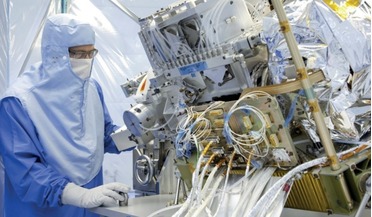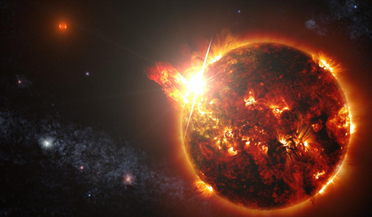 April 2024
Terraformal dreaming
April 2024
Terraformal dreaming
... as warm as an ordinary springtime in Alaska. But that’s just the temperature. Air is another matter entirely. Creating a breathable atmosphere on Mars would require far more than just heat; in fact, it would probably require the same mixture...
 November 2025
Searching for life beyond Earth
November 2025
Searching for life beyond Earth
...the vast and unknown world of exoplanets. Her ground-breaking research ranges from the detection of exoplanet atmospheres to innovative theories about life on other worlds to development of novel space mission concepts. Her current research interests...
 October 2017
Tracking air pollution and monitoring climate change
October 2017
Tracking air pollution and monitoring climate change
... support equipment. Short and long-term Sentinel-5P will make global maps of gases and particles in the atmosphere to track pollution and climate change TROPOMI is what is known as a ‘pushbroom’ spectrometer, featuring high-spectral resolution, high...
 February 2019
European system for global weather forecasting and climate change detection
February 2019
European system for global weather forecasting and climate change detection
...be built of each type. EPS-SG will provide global/regional/local observations from which information on variables of the atmosphere and the ocean and land surfaces can be derived. To fulfil its mission, it is required to deploy sustained capabilities...
 May 2021
In-situ propellant design for Mars ascent vehicles
May 2021
In-situ propellant design for Mars ascent vehicles
... transportation which, theoretically, could use both air-breathing engines and rockets. However, because of the low atmospheric pressure, air-breathing engines are impractical as they would require infeasibly large inlets. Likewise, condensed phase...
 23 December 2020
Harmful stellar flares might not prevent life on exoplanets after all, new study says
23 December 2020
Harmful stellar flares might not prevent life on exoplanets after all, new study says
...helps block harmful levels of ultraviolet (UV) radiation from reaching the ground. If allowed to penetrate through our planet's atmosphere unheeded, it could have a damaging impact on surface life. But despite the damage these unpredictable and often...